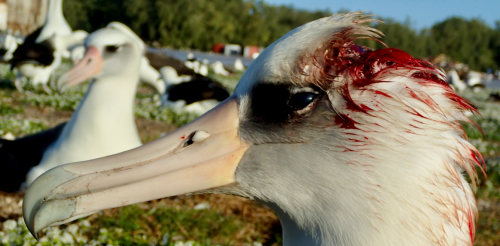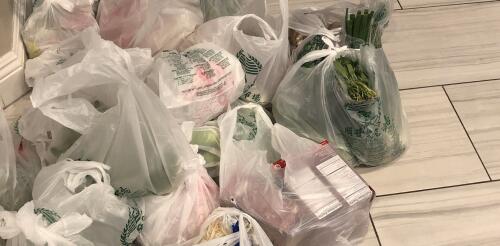environment
At the far end of the Northwestern Hawaiian Islands lies Kuaihelani – also known as Midway Atoll – a small set of islands home to the world’s largest albatross colony. Over a million albatrosses return to Kuaihelani each year to breed. These seemingly pristine islands appear safe, but there’s a predator lurking among the seabirds. House mice (Mus musculus) — the same kind that may be in your residence — have started to attack and kill albatrosses, eating them alive as they sit on their nests. I’m an ecologist who’s been studying the mystery behind these murderous mice. A predator hiding in plain sight Once the site of intense warfare during World War II, Kuaihelani is now a national wildlife refuge. Without predators such as cats, rats or mongooses, Kuaihelani provides a safe haven for millions of nesting and migratory birds, including mōlī (Phoebastria immutabilis), also known as Laysan albatrosses. These seabirds, e...
Central Appalachia is home to the third-largest concentration of forest carbon offsets traded on the California carbon market. But while these projects bring new investments to Appalachia, most people in Appalachia are not benefiting. The effect of this new economic activity is evident in the Clearfork Valley, a forested region of steep hills and meandering creeks on the Kentucky-Tennessee border. Rural communities here once relied on coal mining jobs. As the mines shut down, with the last closing in 2022, the valley was left with thousands of acres of forests and strip-mined land but fewer ways to make a good living. Today, corporate landowners and investment funds have placed most of that forest land into carbon offset projects – valuing the trees for their ability to absorb carbon dioxide emissions to help protect the climate. These carbon offset projects can be lucrative for the landowner, with proceeds that can run into the millions of dollars. Companies subject...
Climate activism has been on a wild ride lately, from the shock tactics of young activists throwing soup on famous paintings to a surge in climate lawsuits by savvy plaintiffs. While some people consider disruptive “antics” like attacking museum artwork with food to be confusing and alienating for the public, research into social movements shows there is a method to the seeming madness. By strategically using both radical forms of civil disobedience and more mainstream public actions, such as lobbying and state-sanctioned demonstrations, activists can grab the public’s attention while making less aggressive tactics seem much more acceptable. Two activists were arrested after throwing tomato soup on Vincent Van Gogh’s glass-covered ‘Sunflowers’ at the National Gallery in London in 2023 in a bid to draw media attention so they could talk about oil’s role in climate change. Just Stop O...
In a newly published study, we describe our design for a self-extinguishing rechargeable battery. It replaces the most commonly used electrolyte, which is highly combustible – a medium composed of a lithium salt and an organic solvent – with materials found in a commercial fire extinguisher. An electrolyte allows lithium ions that carry an electric charge to move across a separator between the positive and negative terminals of a lithium-ion battery. By modifying affordable commercial coolants to function as battery electrolytes, we were able to produce a battery that puts out its own fire. Our electrolyte worked well across a wide temperature range, from about minus 100 to 175 degrees Fahrenheit (minus 75 to 80 degrees Celsius). Batteries that we produced in the lab with this electrolyte transferred heat away from the battery very well, and extinguished internal fires effectively. We subjected these batteries to the nail penetration test, a common method for ass...
Colorado banned plastic bags from large retail stores at the beginning of 2024. A new state ordinance also prohibits restaurants and retail food establishments from using Styrofoam takeout containers. In Boulder, food shoppers have been paying 10 cents for every bag they need at checkout since 2013, with only paper and heavy-duty plastic bags available. Those fees were expanded this year to retail stores of all kinds and sizes. The Conversation interviewed Eleanor Putnam-Farr, an assistant professor of marketing at Rice University and co-author of “Forgot Your Bottle or Bag Again? How Well-Placed Reminder Cues Can Help Consumers Build Sustainable Habits,” about the challenges of changing people’s behavior – even when their intentions are good. How popular are plastic bag bans and taxes? Laws like Colorado’s are popular. Twelve states, plus Puerto Rico, and more than 300 municipalities, including Philadelphia, have banned plastic bag use by consum...




